"Tongue twisters on a cardboard." Part 1: From Idea to Development
Frankly, our application creation scheme is somewhat different from what they write in smart books on development, and therefore questions, advice, opinions and other comments are strongly welcome.
Let’s take a look with us at the stages of creating our latest application - Cardboard Patter.
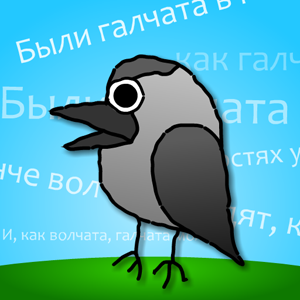
As we wrote , most of our employees are happy and loving parents. From their own experience, they encounter problems from the field of education and know firsthand how difficult it is for children to get acquainted with a new world of sounds and words.
To improve speech skills, many turn to speech therapists or specialized books.
But is it really easy to find a really good specialist? Is it expensive for everyone to afford? How long can a child sit behind a book?
Unfortunately, the answer here is one: no.
Therefore, the idea came up to create a training application for speech correction, with which the child will be able to improve speech skills in a playful way.
In this case, everything is simple - at the request of the “tongue twister” in iTunes, a couple of books were found that were not directly related to tongue twisters, and on Google Play there was just one application, which was a simple text list of tongue twisters.
But the target audience was broader than it seemed at first glance. Tongue twisters are useful not only for children who train pronunciation, but also for adults, whose occupation is somehow connected with public speaking - these are announcers, lecturers, speakers, TV presenters and all those who work with people.
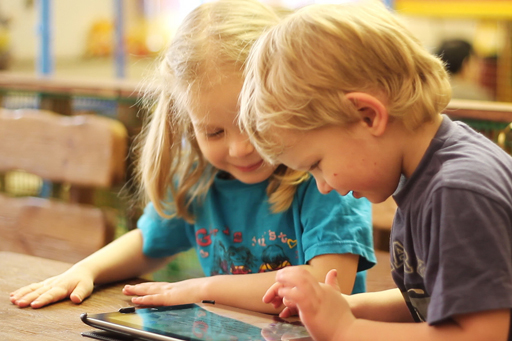
Since the main audience is children, the main and most difficult task is to maintain attention. In addition, the application should be really useful, developing.
It was decided:
First of all, we develop an application for iOS, then port to Android. Why is that?
We were convinced from our own experience: the App Store brings 3 times more profit than Google Play. App Annie's statistics speak for themselves:

As a base technology they took Adobe Air. It was supposed a large number of animations that were convenient to draw in Adobe Flash, + the already existing experience with this technology allowed us to make the project quickly enough.
As usual, there were some minor inconveniences with graphics quality and performance (it was especially slowed down by the encoding algorithm of recorded sound in mp3 on iOS), but overall they were satisfied. Again, porting to Android took just a couple of days with all the testing and debugging, and voilà - "Tongue twisters" appeared on Google Play.
The application would have been released earlier if the developers of the aforementioned software had not made every effort to make it impossible to use the editor. For drawing graphics and animation, a licensed version with all the latest updates (v.12.0.2.529) was used. But with simple drawing of shapes and lines, as well as using fill, the editor freezes regularly. Sometimes it just disappears and that's all ... no answer, no greetings. Saved only by frequent saving to different files, using svn, disabling the autosave function (so that it did not work during the hang) and strong nerves. But all the same, it could not do without a strong word.
As for the design - frankly, it's controversial. This is not exactly what most users expect from a child app. But this is precisely what makes him interesting, and most importantly, the children like it.
How it all began? A sheet of paper, a cup of coffee, a general meeting, we throw, we throw, we throw ideas ... And here is the very first picture - the wolf cub, which laid the foundation for the general style. Of course, we could also take the finished drawing, process it in the style of “but the same thing, but it’s kind of drawn in pencil,” but this is hardly interesting to anyone. Only present, only hardcore!
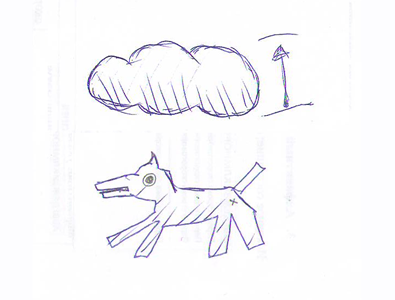

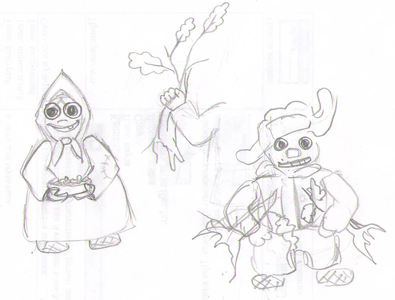
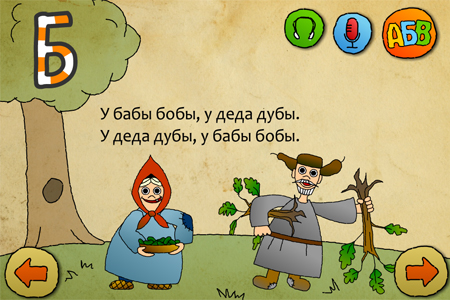
“Cardboard tongue twisters” are only 2 weeks on iTunes and a little less on Google Play ; it is too early to draw conclusions about the effectiveness of different methods of promotion. About testing and marketing, read “Tongue twisters on a cardboard. Part 2 "in a week.
Always yours,
Online Science Classroom
Let’s take a look with us at the stages of creating our latest application - Cardboard Patter.

Idea
As we wrote , most of our employees are happy and loving parents. From their own experience, they encounter problems from the field of education and know firsthand how difficult it is for children to get acquainted with a new world of sounds and words.
To improve speech skills, many turn to speech therapists or specialized books.
But is it really easy to find a really good specialist? Is it expensive for everyone to afford? How long can a child sit behind a book?
Unfortunately, the answer here is one: no.
Therefore, the idea came up to create a training application for speech correction, with which the child will be able to improve speech skills in a playful way.
Market analysis and target audience identification
In this case, everything is simple - at the request of the “tongue twister” in iTunes, a couple of books were found that were not directly related to tongue twisters, and on Google Play there was just one application, which was a simple text list of tongue twisters.
But the target audience was broader than it seemed at first glance. Tongue twisters are useful not only for children who train pronunciation, but also for adults, whose occupation is somehow connected with public speaking - these are announcers, lecturers, speakers, TV presenters and all those who work with people.

Functional Definition
Since the main audience is children, the main and most difficult task is to maintain attention. In addition, the application should be really useful, developing.
It was decided:
- choose one tongue twister for each letter of the alphabet (well, almost for every one - remember the soft sign, yes);
- for each tongue twister a separate screen with an illustration;
- use the capabilities of the accelerometer to give animations interactivity;
- make voice acting in the form of two speaker entries for each tongue twister; one record is slow, the other is faster;
- realize the possibility of adding your own audio recording to each tongue twister.
Platform selection
First of all, we develop an application for iOS, then port to Android. Why is that?
We were convinced from our own experience: the App Store brings 3 times more profit than Google Play. App Annie's statistics speak for themselves:

Technology selection
As a base technology they took Adobe Air. It was supposed a large number of animations that were convenient to draw in Adobe Flash, + the already existing experience with this technology allowed us to make the project quickly enough.
As usual, there were some minor inconveniences with graphics quality and performance (it was especially slowed down by the encoding algorithm of recorded sound in mp3 on iOS), but overall they were satisfied. Again, porting to Android took just a couple of days with all the testing and debugging, and voilà - "Tongue twisters" appeared on Google Play.
Design and the horrors of Adobe Flash CS6
The application would have been released earlier if the developers of the aforementioned software had not made every effort to make it impossible to use the editor. For drawing graphics and animation, a licensed version with all the latest updates (v.12.0.2.529) was used. But with simple drawing of shapes and lines, as well as using fill, the editor freezes regularly. Sometimes it just disappears and that's all ... no answer, no greetings. Saved only by frequent saving to different files, using svn, disabling the autosave function (so that it did not work during the hang) and strong nerves. But all the same, it could not do without a strong word.
As for the design - frankly, it's controversial. This is not exactly what most users expect from a child app. But this is precisely what makes him interesting, and most importantly, the children like it.
How it all began? A sheet of paper, a cup of coffee, a general meeting, we throw, we throw, we throw ideas ... And here is the very first picture - the wolf cub, which laid the foundation for the general style. Of course, we could also take the finished drawing, process it in the style of “but the same thing, but it’s kind of drawn in pencil,” but this is hardly interesting to anyone. Only present, only hardcore!




“Cardboard tongue twisters” are only 2 weeks on iTunes and a little less on Google Play ; it is too early to draw conclusions about the effectiveness of different methods of promotion. About testing and marketing, read “Tongue twisters on a cardboard. Part 2 "in a week.
Always yours,
Online Science Classroom
